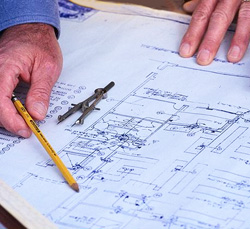“Should we do this A/V/L install ourselves or hire a contractor?” is a question I’m asked all the time.
Too often, the question is decided based on dollars. On paper, it looks like hiring a contractor is a more expensive option, but this is rarely the case when all factors are considered.
The illusion of cost-savings comes from the fact that most churches (and many companies) don’t factor in the cost of labor for their staff. But there is always a cost, and a wise manager will take that into account.
This isn’t to say that doing a job in-house is always a bad idea; it’s simply a matter of weighing the options and determining the best approach for a particular project. Here are some guidelines that I use when trying to decide how to proceed.
Do The Job In-House When…
You have the skills in-house. Some churches have highly skilled tech staffs, and it makes total sense to use that skill set to do the work of an install. The team will be working with the equipment day in and day out anyway, so installing it makes sense. Having people on staff who can lay out cable runs, pull said cable, solder, interconnect and commission systems is a blessing to many larger churches. If you have the skills, by all means, proceed.
You have the manpower in-house. Sometimes a church has one or two highly skilled people on staff who could do the install, but is that enough? Depending on the size of the project, more hands may be required. Often, larger churches will have larger tech staffs who can put in significant time on an install, so again, this makes sense.
You have the time. Larger churches with sizable tech staffs have those large staffs because the church is very busy doing ministry. If the project is not extremely time-sensitive, it’s entirely possible that this team can get the job done. Deciding two weeks before Easter that you’d like a new video system may not allow the in-house team enough time to get the job done, however.
The budget is tight. Sometimes we have to do installs within a tight budget, and the easiest way to save money is to self-install. Even factoring in the costs that really do exists with self-install, it’s often easier to stomach that bill than paying a contractor. Sometimes it can even mean the difference between getting the job approved or not.
Note that the order of those criteria is intentional; budget is last in my decision-making process.
We ended up doing a self-install last year in our kids and students wing. We have the skills; since it was summer, many of my younger volunteers were out of school and could help pull cable; time was a little tight, but we made it work; and the budget was definitely tight. It took a few long days to get it all in, but everyone is very happy with the result.





















